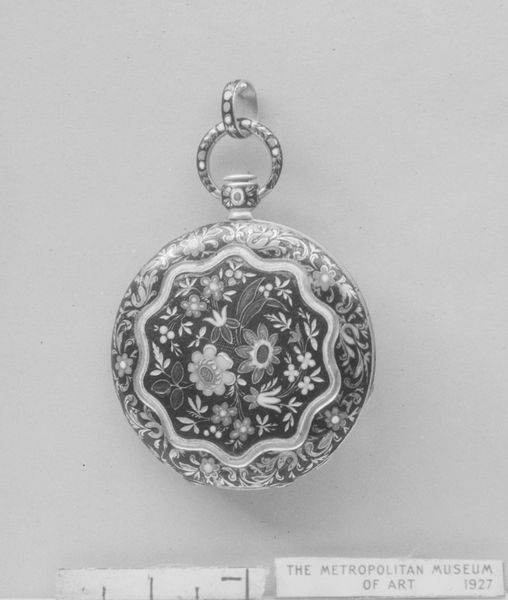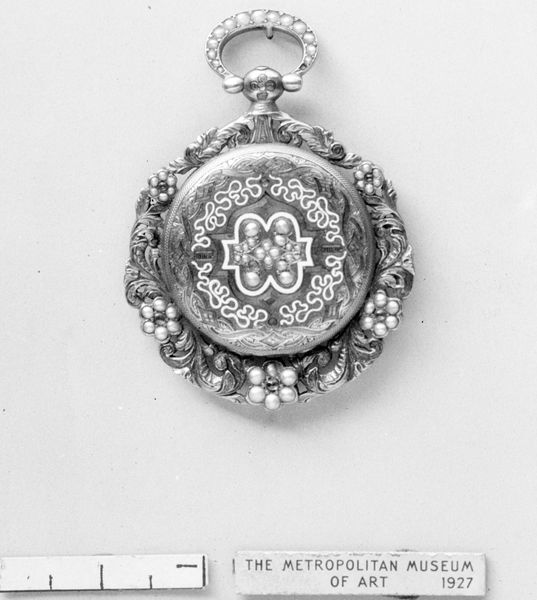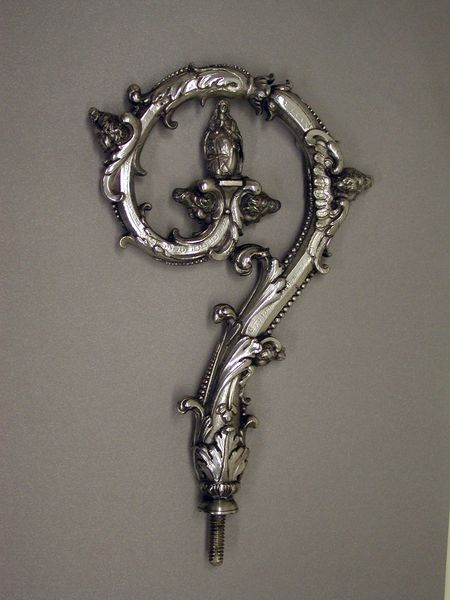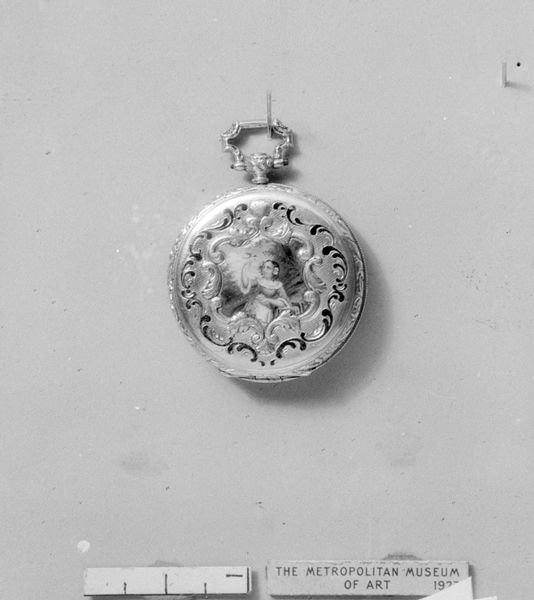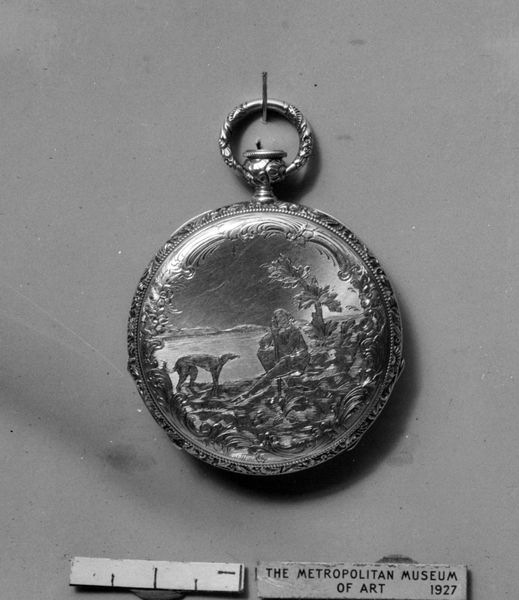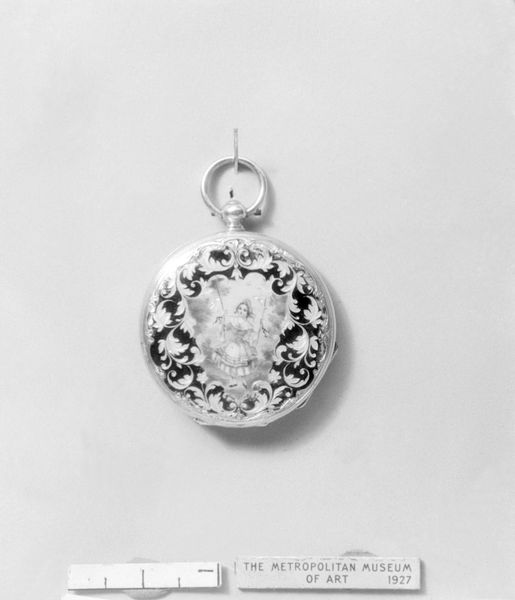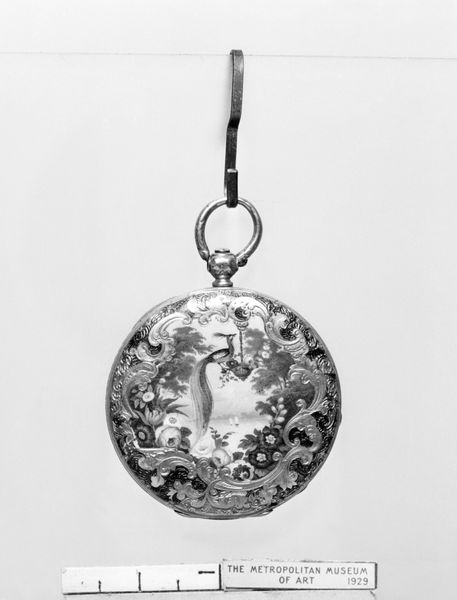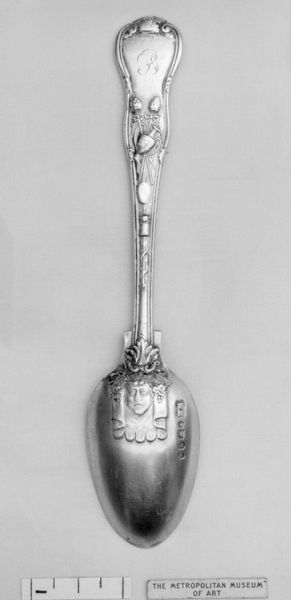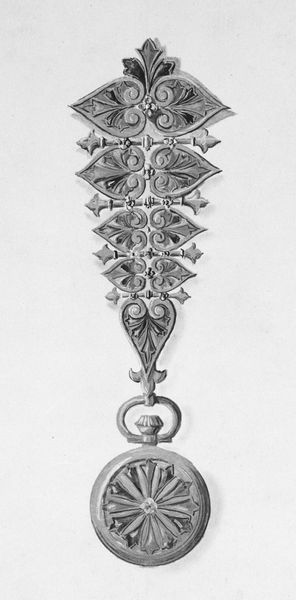
silver, metal, sculpture
#
portrait
#
silver
#
metal
#
sculpture
#
jewelry design
#
11_renaissance
#
jewelry
#
sculpture
#
jewelry
#
decorative-art
Dimensions: Overall: 1 3/4 × 1 in. (4.4 × 2.5 cm)
Copyright: Public Domain
Curator: This pendant, currently housed at the Metropolitan Museum of Art, presents a fascinating exercise in historical pastiche. Created in the 19th century, it's crafted in the style of 16th-century jewelry, using silver and other metals. Editor: My initial impression is that it’s charming, but melancholic. The cool silver tones and the way the pearls droop slightly… it almost feels like tears frozen in time. Curator: That's a perceptive reading. Structurally, the pendant features two figures, possibly mermen or sirens, flanking a central pendant. Note the repetitive use of curves and volutes, creating a symmetrical design anchored by the vertical drop of the pearls. This repetition echoes a very classical sensibility. Editor: Right, the mermaid figures, with their entwined tails, strike me as allegorical—perhaps alluding to themes of temptation and duality. We see this throughout art history when depicting mythological sea creatures, these figures, even rendered in silver, capture the duality between danger and beauty. Curator: I concur; the figures could signify the complex interplay of those opposing concepts. Also, observe the choice of silver. Beyond its inherent metallic properties, its muted shine complements the pearls, creating a deliberate subdued luminescence. Its materiality is a soft elegance that underscores its craftsmanship, I see great refinement, despite its historicizing gestures. Editor: Thinking about cultural memory, pendants such as these often carried personal significance beyond adornment. Perhaps this was intended to invoke a specific memory, a secret love, or even serve as an amulet offering the wearer some kind of intangible protection, perhaps associated with folklore about the sea and its creatures. Curator: Yes, such layering of potential meanings reinforces the sophistication in its conception, where artifice serves artistic intent. Considering it through a formalist lens and looking closely reveals far more depth and intention than a casual observation might initially suggest. Editor: Absolutely, diving into its imagery truly adds layers to appreciating how symbolism creates continued meaning over centuries.
Comments
No comments
Be the first to comment and join the conversation on the ultimate creative platform.

